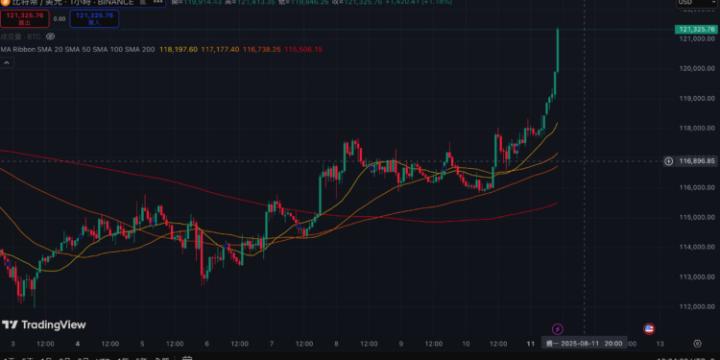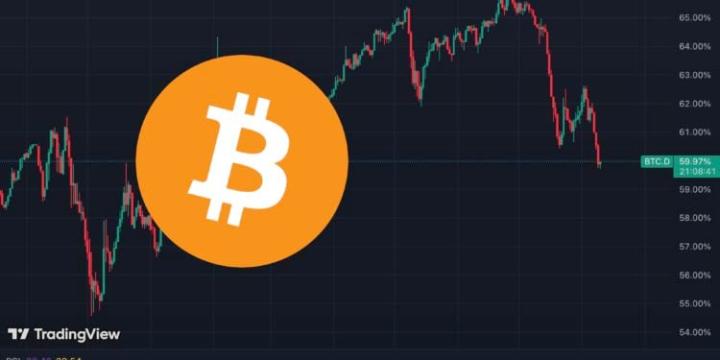The four-year halving cycle once acted like a metronome for BTC price, but in 2025, this rhythm is losing its precision. After the halving in April 2024, BTC not only peaked early but also sparked a debate about the cycle's survival. Many industry leaders believe that institutional funds and ETF inflows have reshaped the supply and demand structure, and the next market trend will no longer be dictated by the halving. At the same time, some emphasize that traditional cycles still hold reference value. Is the cycle "ending" or "evolving"? The following analysis breaks it down from four perspectives: history, funds, macro, and strategy.
Historical Rules Challenged
In the past, BTC hit its peaks about a year after each of the three halvings in 2013, 2017, and 2021, forming a seemingly reliable four-year cycle. However, this time shows a significant deviation: before the 2024 halving, the price had already broken through the old high; by August 2025, it had only fallen 26% from its peak, far lower than the previous corrections of over 70%. This divergence puts quantitative strategies based on historical trends at risk of failure and forces fund managers to reassess their positions. Investor Jason Williams directly stated:
"The top 100 Bitcoin companies control about 1 million BTC, and the cycle story is over."
On the same day, Matthew Hougan, Chief Investment Officer at Bitwise Asset Management, expressed a similar view in a CNBC commentary, expecting positive returns in 2026 but no longer driven by halving. The Bitcoin Bond Company's CEO Pierre Rochard even said, "It seems the cycle has indeed reached its end."
ETF Institutional Funds Rewrite Market
What truly shook the cycle belief was the unprecedented scale of institutional buying. By the end of 2024, institutions held 1.25 million BTC; by mid-2025, this increased to 1.86 million BTC, locking up over 8% of circulating supply. The BlackRock iShares Bitcoin Trust ETF (IBIT), launched in January 2024, accumulated about $87 billion in assets in less than two years, setting an ETF growth speed record and creating continuous passive buying pressure.
Large-scale passive allocation means that as long as new funds continue to flow into retirement and investment accounts, BTC will receive long-term buying similar to indexing. The macro environment and institutional flows may now have the same impact as ETF adoption and halving. CryptoQuant CEO Ki Young Ju also recently believed that the market structure has shifted to being "dominated by institutional long-term holders".
Opposing Theory: Just Becoming More Complex
Zooming out, interest rates, geopolitical events, and presidential election cycles are gradually becoming more influential on BTC trends than a single halving. US interest rate adjustments affect dollar liquidity; conflicts in Europe and Asia make BTC seen as a hedge alternative; the EU's MiCA framework and US SAB 121 controversy are adjusting compliance boundaries, paving the way for institutional entry. However, some views believe the cycle hasn't disappeared but has integrated into a more complex framework. Crypto analyst CRYPTO₿IRB believes that ETFs themselves operate within the four-year presidential cycle, "actually reinforcing BTC's cyclicality". Xapo Bank CEO Seamus Rocca also argues that while the structure has changed, the core rhythm remains.
BTC Moving Towards a Multi-Dimensional Era
As BTC becomes increasingly mainstream, the analytical focus has shifted from "counting down to the next halving" to "tracking institutional positions and macro data". Veteran analysts like Tom Lee still see the potential to challenge $200,000 to $250,000 in 2025, but the key drivers have been redefined: corporate BTC holdings in quarterly reports, ETF net inflow, and Federal Reserve policy guidelines may be more insightful than a single halving. For investors, strategies must integrate supply and demand, interest rates, and regulatory axes to maintain flexibility in a market with reduced but more complex volatility.
Overall, BTC's journey towards mainstream finance has not diminished its narrative, but the storytelling has changed from "a chapter every four years" to a "long-running series". If the past market was like a roller coaster, now it's more like a highway with high speed but fewer turns, requiring drivers to upgrade their dashboard. Whether the cycle is ending or evolving, understanding the new normal woven by institutional funds, macro environment, and regulation will be the necessary homework for the next stage.






